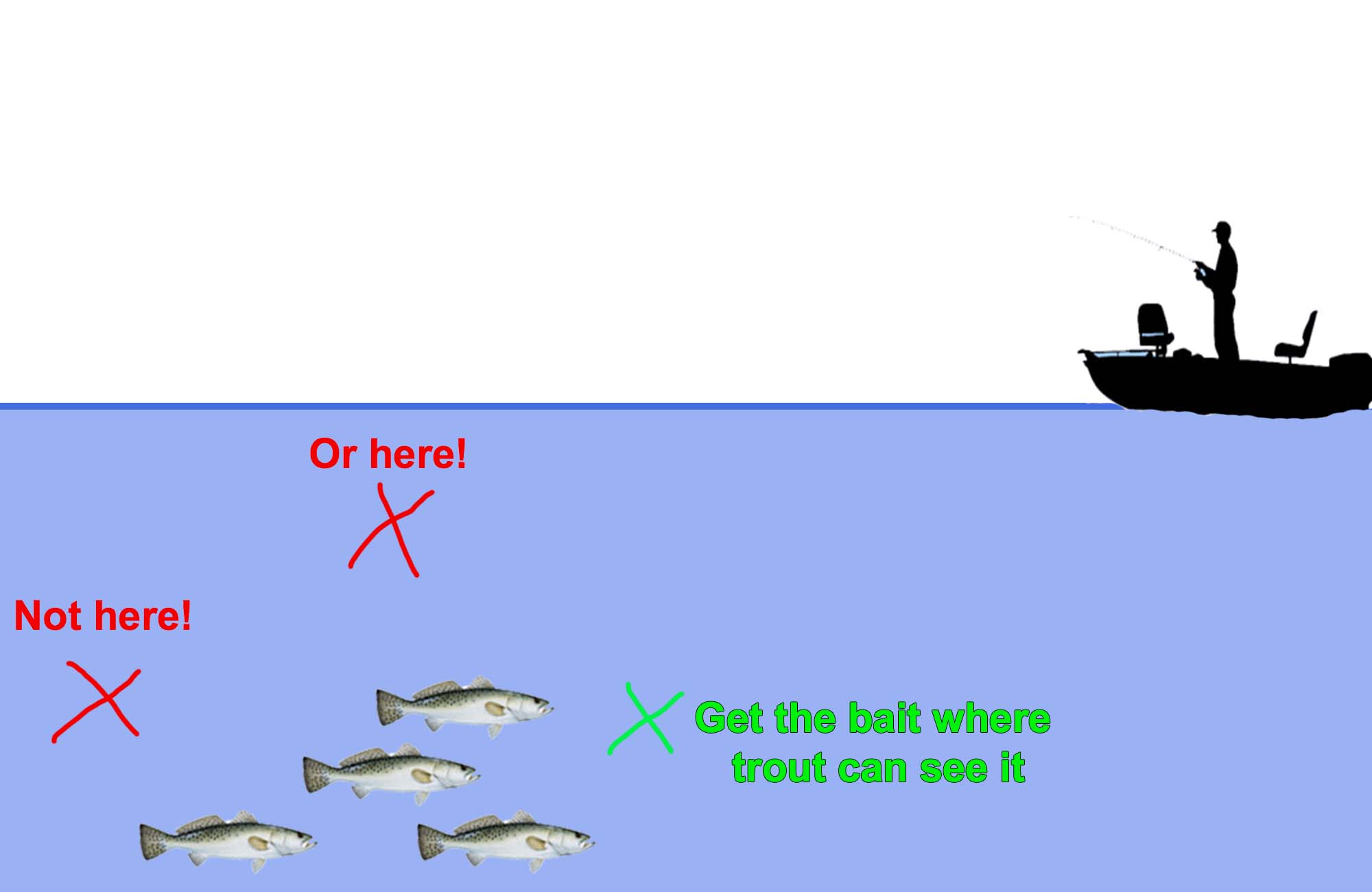You must strike a balance as you experiment with lure colors. Not too little and not too much. This is how you do it.
Have you been in this situation?
You’re sitting at a fishing spot and you’re not catching anything.
Eventually you begin wondering if trout aren’t biting because they don’t like the chartreuse plastic you’re throwing.
So it makes sense you should experiment with lure colors, like purple.
A couple casts later you think you felt a nibble. You must be on the right track!
But, another cast and nothing happens.
Okay, maybe they nibbled that one color because it’s slightly similar to the one they really want?
So you try a different shade of purple.
And this process goes on and on, repeating itself at a few different spots.
Eventually the trip is over and you return with little to show for your effort.
How to Experiment With Lure Colors
Perhaps you’ve experienced that exact scenario.
I know I have!
Trying an experiment with lure colors made sense to me.
After all, why would lure companies make so many to fish with?
I’d keep casting, wishing one of them would turn on the bite.
Fishing like that wasn’t effective. It was poor experimentation.
But today I know how to experiment more efficiently. This is how:
Understanding the Quarry
You need to understand what you’re really fishing for to know how much you need to experiment with lure colors.
In this case: speckled trout.
But not any speckled trout. We must zero in on a specific kind.
Speckled trout in large schools ravenously feeding on bait in Louisiana’s inshore waters.
Not largemouth bass in Lake Conroe on day three of the Bassmaster Classic. Not redfish in Tampa, Florida. Not goldfish at Petco.
Assuming you want to catch limits of speckled trout, you’d want to focus on large schools of speckled trout going to town on baitfish.
These trout are hardly pressured by anglers.
They are quick to make mistakes because they don’t scrutinize what they bite.
Trust me, I’ve caught the same fish more than once, in the same spot with the same bait.
Focusing on finding this exact kind of fish will yield better results than any experiment with lure colors.
You could experiment with lure colors until you’re blue in the face, but it won’t matter if there’s no biting speckled trout!
Effectively Fish the Entire Water Column
Have you ever seen two boats casting at the same spot, but only one is catching fish?
The one boat that isn’t catching fish is usually poorly positioned, not achieving a good presentation, or a combination of both.
This doodle best explains what I mean by “good presentation”.

Boat positioning, weight selection and more are elements of effectively fishing the entire water column, and part of what I teach inside Inshore Fishing 101.
[thrive_testimonial name=”Wade D.” company=”” image=”https://www.lafishblog.com/wp-content/uploads/wade-duplessie.jpg”]I feel like the most valuable thing I learned in inshore 101 was how to effectively fish the entire water column. Captain Devin did an excellent job on teaching this.[/thrive_testimonial]
You can get my free course on the elements of effective fishing here.
So keep in mind: you can change colors until you’re blue in the face, it won’t matter if trout never see the bait!
Light and Dark Colors, That’s It!
I will try a light color (chartreuse, pearl white, etc.) and a dark color (i.e. purple, black, etc.).
Not 15 variations of each. Just one dark and one light. No more!
If I don’t catch after that, I bail out and roll to my next spot.
When should I really experiment with lure color?
By now you’re probably thinking, “This guy really hates lure colors and experimentation.”
Ha ha! Not quite!
I do like experimenting and getting fish to bite, but there is a time and place for it.
I’ll know it’s time to experiment further when these things happen:
Following Fish
As I am fishing I will watch my lure as it’s retrieved back to the boat.
If I see a speckled trout curiously following it, but not committing to it, then I know it’s time to switch things up.
I feel more strongly about this if I see it happen more than once.
Repeated Missed Strikes
Strikes that don’t result in a good hook set will spur me to experiment with colors.
I do this operating on the idea they can’t identify/see the bait, and could commit it to more easily if a different color were more visible.
However, if I feel the missed strikes are small fish (too small to fit the lure in their mouth), I’ll just pick up and go. This comes with experience.
Beyond Lure Colors
I’ll experiment with more than color:
- lure action
- scent
- retrieve speed
- sinking weight
Sometimes jigging the lure up and down or speeding up the retrieve is all you need to get a following fish to commit.
Conclusion
Experimenting with lure color works, but the key is knowing when to do so.
If not, we risk wasting valuable time at unproductive spots.
Time is the most valuable thing we have on fishing trips, and needlessly changing lure color is a surefire way to waste it.
Instead, focus on what you’re targeting, getting the bait in front of them and covering water when spots don’t give up fish.
I hope this helps you on your next fishing trip.
Tight lines, y’all!
Comments? Post yours below.

The best time to play with colors and other lure variables is when you are on a hot bite. That way you can switch back and forth between the lure that you know is producing fish and the lure in question. When I try this I usually find that the lure does not matter so much. It’s more the fact that I found fish that were feeding than the color/type of the lure.